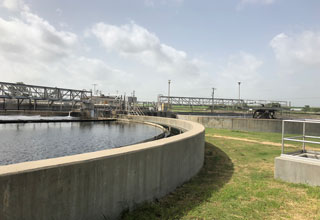Treating for Enterococci (Source: Water & Wastes Digest)
By Paul Wood
The city of Corpus Christi Greenwood Wastewater Treatment Plant (WWTP) uses ultraviolet (UV) light for disinfecting its effluent discharge. Originally permitted for E. coli, the parameter was changed when Texas aligned its discharge parameters to the U.S. EPA discharge criteria. Facilities with ocean or brackish water discharges now use enterococci as the indicator organism for effluent disinfection status.
A new UV disinfection system was required at the Greenwood WWTP due to repeated flooding of the existing UV facility and difficulty in consistently meeting the enterococci limits where it had previously consistently met its previous E. coli discharge limits.
In July 2015, the city contracted Lockwood, Andrews & Newnam Inc. (LAN), a national planning, engineering and program management firm, to prepare a preliminary engineering report detailing the differences in treating for E. coli versus enterococci, along with recommendations to ensure that a future UV installation would meet limits. These included higher applied dose requirements to inactivate enterococci and filtration prior to UV disinfection to ensure nominal particle size of suspended solids passing through the UV system so that UV exposure could be ensured. LAN subsequently was selected to prepare the final engineering documents for system construction.
CLICK HERE TO READ COMPLETE STORY

